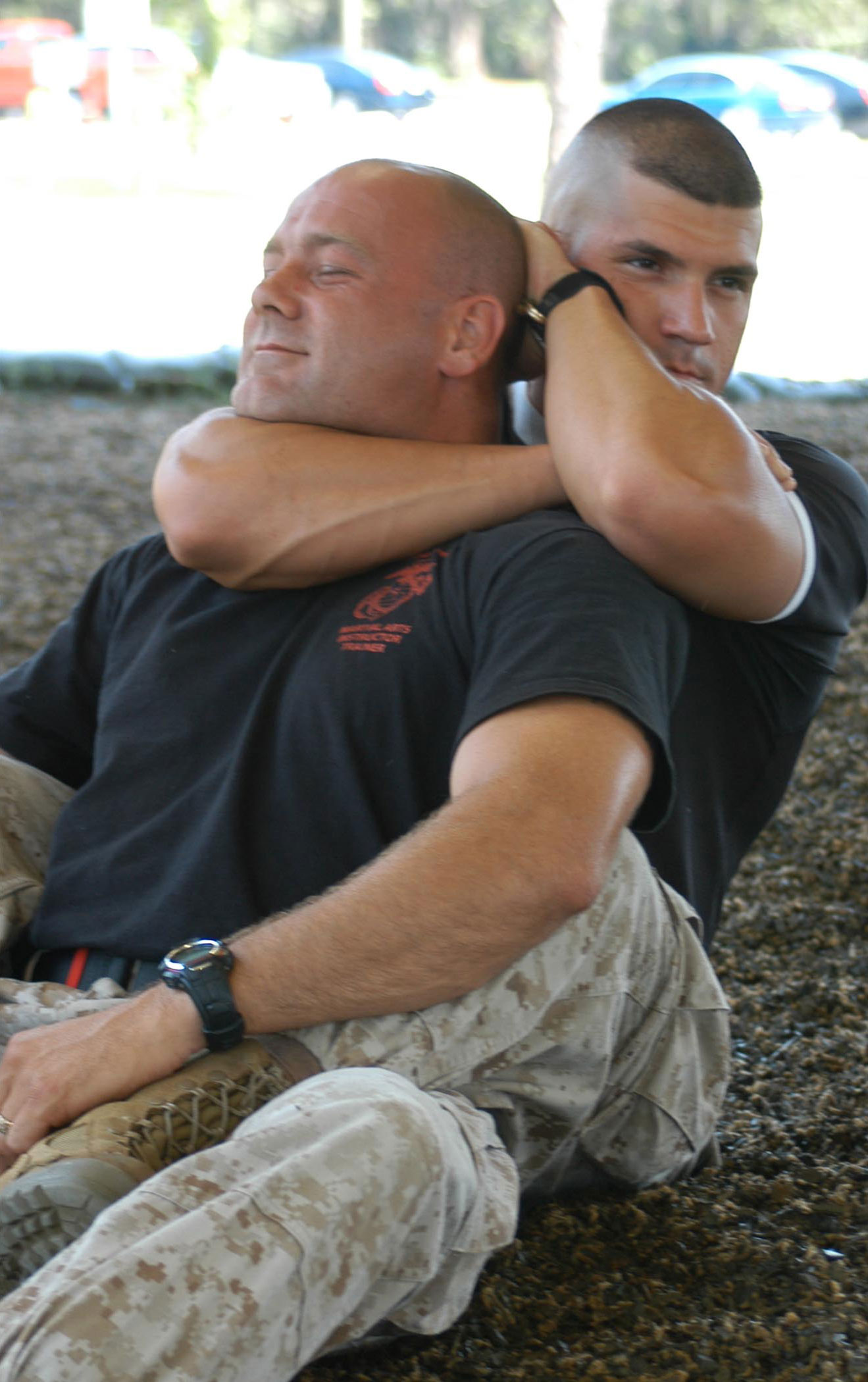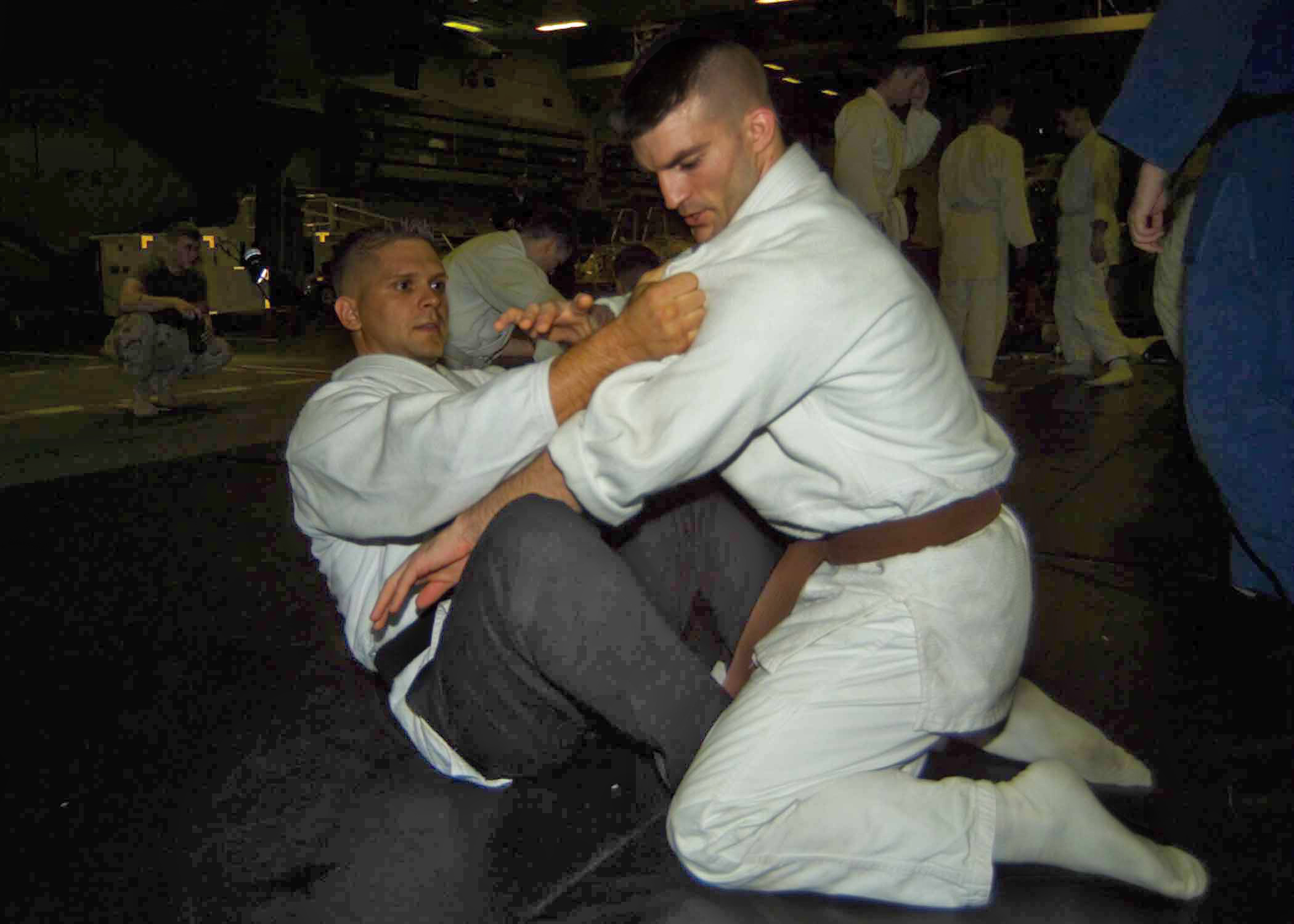Hooks (grappling) on:
[Wikipedia]
[Google]
[Amazon]
Hooks is a term in


 * Back / Rear mount - Hooks are locked into opponent's mid-thighs to prevent the opponent from escaping or reversing the position, hooks are also used in this position to add leverage to chokes.
*
* Back / Rear mount - Hooks are locked into opponent's mid-thighs to prevent the opponent from escaping or reversing the position, hooks are also used in this position to add leverage to chokes.
*
www.bjjlegends.com
Marcelo Garcia - Taking the Back & controlling hooks
grappling
Grappling, in hand-to-hand combat, describes sports that consist of gripping or seizing the opponent. Grappling is used at close range to gain a physical advantage over an opponent, either by imposing a position or causing injury. Grappling i ...
martial arts
Martial arts are codified systems and traditions of combat practiced for a number of reasons such as self-defense; military and law enforcement applications; combat sport, competition; physical, mental, and spiritual development; entertainment; a ...
that generally refers to the use of careful positioning of a practitioner’s feet and legs to control and manipulate the movement or position of their opponent. One of the most common uses of hooks is in the back control
Back mount, or rear mount (often confused with back control), is a dominant grappling position where the practitioner is on their opponent's back in such a way that they have control of their opponent (in back control, the practitioner controls ...
position to prevent escape. However, a practitioner may alternatively use hooks to defend, sweep
Sweep or swept may refer to:
Cleaning
* Sweep, the action of using a brush to clean
* Chimney sweep, a worker who clears ash and soot from chimneys
* Street sweeper, a person's occupation, or a machine that cleans streets
* Swept quartz, a clean ...
, or attack their opponent.
Uses
Hooks are very important tools in the arsenal of a grappler. The effective use of the feet to manipulate the position of the opponent is essential to maintaining control of one's opponent. Both in offensive and defensive situations, locking in hooks gives an advantage of more points of contact with the opponent. This in turn increases the ability to impose submissions, and the ability to avoid them.Offense
Offensive uses of hooks include the control of an opponent until the application of a submission hold, as with theBack mount
Back mount, or rear mount (often confused with back control), is a dominant grappling position where the practitioner is on their opponent's back in such a way that they have control of their opponent (in back control, the practitioner controls ...
position where the practitioner applies hooks to his opponent's thighs until he opts to apply a submission from the back, a very commonly used submission is the Rear naked choke
The rear naked choke (RNC) is a chokehold in martial arts applied from an opponent's back. The word "naked" in this context suggests that, unlike other strangulation techniques found in jujutsu/judo, this hold does not require the use of a keikogi ...
. In some cases, hooks are used to apply the submissions itself, as with the Gogoplata
A gogoplata, foot choke "Piroplata" or is a type of chokehold that utilizes the shin bone. This technique is often used in Kodokan Judo, submission grappling, and Brazilian jiu-jitsu.
History
In the film ''The Essence of Judo'', judoka Kyuzo M ...
submission where the hook is applied to the opponent's throat as a choke.

Defense
The use of hooks in defense consists of the practitioner using their feet to limit the advancement of their opponent as with theHalf guard
Half guard (or half mount) is a ground grappling position where one combatant is lying on the other, with the bottom combatant having one leg entangled. Sometimes the bottom combatant is said to be in half guard, while the top combatant is in ...
position, sweeping their opponent as seen with the Butterfly guard
The guard is a ground grappling position in which one combatant has their back to the ground while attempting to control the other combatant using their legs. In pure grappling combat sports, the guard is considered an advantageous position, ...
, and using hooks to counterattack opponents.

Positions and applications
 * Back / Rear mount - Hooks are locked into opponent's mid-thighs to prevent the opponent from escaping or reversing the position, hooks are also used in this position to add leverage to chokes.
*
* Back / Rear mount - Hooks are locked into opponent's mid-thighs to prevent the opponent from escaping or reversing the position, hooks are also used in this position to add leverage to chokes.
* Full mount
The mount, or mounted position, is a dominant ground grappling position, where one combatant sits on the other combatants torso with the face pointing towards the opponent's head. This is a favorable position for the top combatant in several wa ...
- Hooks are locked below the calves of the opponent to increase downward pressure, they are also used to help base to prevent sweeps.
* Butterfly guard
The guard is a ground grappling position in which one combatant has their back to the ground while attempting to control the other combatant using their legs. In pure grappling combat sports, the guard is considered an advantageous position, ...
- Butterfly hooks are locked in the inner thigh
In human anatomy, the thigh is the area between the hip (pelvis) and the knee. Anatomically, it is part of the lower limb.
The single bone in the thigh is called the femur. This bone is very thick and strong (due to the high proportion of bone ...
of opponent, and are used to keep opponent off balance. They also can be used to sweep an opponent, in order to advance to a more dominant position. Butterfly hooks are generally used in tandem with some combination of overhook
In wrestling, an overhook, also incorrectly called a wizard (a whizzer is when the opponent's armpit and shoulder are lifted with an overhook hold, usually done against leg takedown attacks), is a clinch hold that is used to control the opponent. ...
s and/or underhook
An underhook is a clinch hold that is used in grappling to control the opponent. It is performed from any direction by putting an arm under the opponent's arm, and holding the opponent's midsection or upper body. Having an underhook with one arm ...
s to secure the butterfly guard
The guard is a ground grappling position in which one combatant has their back to the ground while attempting to control the other combatant using their legs. In pure grappling combat sports, the guard is considered an advantageous position, ...
.
* Half guard
Half guard (or half mount) is a ground grappling position where one combatant is lying on the other, with the bottom combatant having one leg entangled. Sometimes the bottom combatant is said to be in half guard, while the top combatant is in ...
- Hooks are locked on one leg of the opponent to prevent them from advancing to full mount
The mount, or mounted position, is a dominant ground grappling position, where one combatant sits on the other combatants torso with the face pointing towards the opponent's head. This is a favorable position for the top combatant in several wa ...
or side control
In grappling, side control (often also called side mount, cross mount, 100 kilos) is a dominant ground grappling position where the top combatant is lying perpendicularly over the face-up bottom combatant in such a way that the legs are free and ...
, generally a last defensive position before the opponent gains a dominant position, such as side control or full mount.
* Open guard
Open or OPEN may refer to:
Music
* Open (band), Australian pop/rock band
* The Open (band), English indie rock band
* ''Open'' (Blues Image album), 1969
* ''Open'' (Gotthard album), 1999
* ''Open'' (Cowboy Junkies album), 2001
* ''Open'' (YF ...
- Hooks are generally moving and are not locked as in other positions, can be in several different locations including, but not limited to, crook of the elbow
The elbow is the region between the arm and the forearm that surrounds the elbow joint. The elbow includes prominent landmarks such as the olecranon, the cubital fossa (also called the chelidon, or the elbow pit), and the lateral and the media ...
, the hip
In vertebrate anatomy, hip (or "coxa"Latin ''coxa'' was used by Celsus in the sense "hip", but by Pliny the Elder in the sense "hip bone" (Diab, p 77) in medical terminology) refers to either an anatomical region or a joint.
The hip region is ...
s, shin
Shin may refer to:
Biology
* The front part of the human leg below the knee
* Shinbone, the tibia, the larger of the two bones in the leg below the knee in vertebrates
Names
* Shin (given name) (Katakana: シン, Hiragana: しん), a Japanese ...
or calf
Calf most often refers to:
* Calf (animal), the young of domestic cattle.
* Calf (leg), in humans (and other primates), the back portion of the lower leg
Calf or calves may also refer to:
Biology and animal byproducts
* Veal, meat from calves
* ...
, ribcage
The rib cage, as an enclosure that comprises the ribs, vertebral column and sternum in the thorax of most vertebrates, protects vital organs such as the heart, lungs and great vessels.
The sternum, together known as the thoracic cage, is a semi- ...
of the opponent, etc. In this position hooks are flexible and aid the practitioner in attempting sweeps, preventing guard passes or blocking strikes.
* Spider guard Hooks are generally locked against arms of opponent to prevent strikes and limit guard passing, sometimes used to set up shoulder
The human shoulder is made up of three bones: the clavicle (collarbone), the scapula (shoulder blade), and the humerus (upper arm bone) as well as associated muscles, ligaments and tendons. The articulations between the bones of the shoulder mak ...
and armlock
An armlock in grappling is a single or double joint lock that Anatomical terms of motion#General motion, hyperextends, hyperflexes or hyperrotates the elbow, elbow joint or glenohumeral joint, shoulder joint. An armlock that hyper-extends the ...
s. Spider guard also uses hooks to control other areas but this is one of the most common.
* X-guard - Hooks are locked in opposition around one leg (creating the X shape for which the position is named), while the practitioner traps other leg with his arm. Hooks change position to sweep opponent in different directions, giving the practitioner the ability to vary his attacks and set up several different submission attempts.
Related techniques
When the strategy of limiting the opponent’s movements is applied with the hands and arms rather than the feet and legs, generally in aClinch fighting
Clinch fighting is the part of stand-up fighting where the combatants are grappling in a clinch, typically using clinch holds. Clinching the opponent can be used to eliminate the opponent's effective usage of some kicks, punches, and melee weap ...
situation, it is referred to as Underhook
An underhook is a clinch hold that is used in grappling to control the opponent. It is performed from any direction by putting an arm under the opponent's arm, and holding the opponent's midsection or upper body. Having an underhook with one arm ...
(s) or Overhook
In wrestling, an overhook, also incorrectly called a wizard (a whizzer is when the opponent's armpit and shoulder are lifted with an overhook hold, usually done against leg takedown attacks), is a clinch hold that is used to control the opponent. ...
(s), depending on the position of the practitioner’s arm(s) in relation to their opponent’s arm(s).
External links
www.bjjlegends.com
Marcelo Garcia - Taking the Back & controlling hooks
References
{{Grappling Grappling Brazilian jiu-jitsu techniques